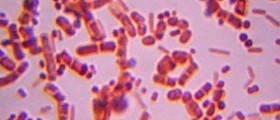
Furuncle or boil is a skin infection that affects the entire hair follicle and the nearby skin tissue. Skin boils are very common, and they are actually the infections of hair follicles. In many cases, they are caused by a bacterium known as Staphylococcus aureus, and have typical appearance of a small red lump on the skin that is extremely tender. The skin around the boil may be tender as well, red, swollen and inflamed. Thick yellowish fluid, known as puss, normally fills the central part of the boil. Individual boils may even be clustered together to form carbuncles. These are abscesses larger than a boil, usually with one or more openings draining pus onto the skin.
Causes of furuncles
As already mentioned, boils are caused by Staphylococcus aureus. This bacterium is the most common cause of staph infections. It normally lives on the skin surrounding the nose and more than 20 percent of population are actually carriers of this germ on their body. These bacteria can cause large number of skin infections including pimples, impetigo, cellulitis folliculitis, carbuncles, scalded skin syndrome, and abscesses. Boils normally develop in the hairy area of skin, where there is a lot of friction or where the skin is moist from sweating. Boils, therefore, affect the regions on the neck, face, armpit, buttocks and around the anus. Boils mostly affect adults and teenagers, and they are generally very rare in children. Certain groups of people are at the highest risk of boils: people with a poor immune system, people affected by various skin conditions (including eczema and scabies), obese individuals, or people who are carriers of Staphylococcus aureus.
Chronic furunculosis
Chronic furunculosis is a condition in which a person develops recurring boils. If this is the case, an individual should seek medical attention to determine the underlying cause. In many cases, recurring boils are found in individuals with a very low immune system. However, people may be completely healthy and still suffer from chronic furunculosis. This happens in the households in which at least one of the members is a carrier of staphylococcal bacteria. Even the affected individual may be the one that has the bacteria on the skin. Whoever is the carrier, the bacteria live harmlessly on the skin or inside of the nose. However, these bacteria may occasionally invade the broken skin and multiply within the small wounds, causing the infection and formation of boils. The only way to prevent this from happening in the future is to use antibiotics or antibiotic nasal cream to clear the bacteria from carriers.

















Your thoughts on this
Loading...